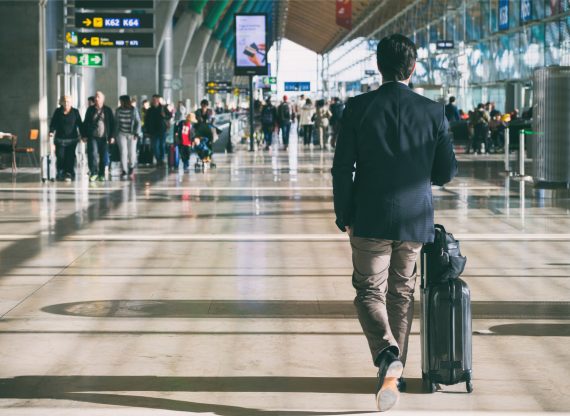Air travel much costlier due to federal fees

Anyone from Quebec or Ontario who’s ever wanted to visit British Columbia knows it: Flying in Canada is expensive.
The reasons for this are obvious when you consider that nearly a third of the price of a plane ticket is made up of taxes and fees outside of the airline’s control. For example, imagine that you want to book a flight from Montreal to Vancouver to go skiing during your spring break.
Even before adding a single bag, the least expensive return trip with Porter will cost you $512.05. Yet from the airline’s perspective, this trip is offered to you at $332.00.
The other $180.05 represents the various charges and taxes you have to pay, of which the federal government is one of the largest beneficiaries. The biggest slice, making up $102 in this case, is due to what are known as airport improvement fees.
Although these fees are charged by the non-profit airport authorities responsible for managing Canada’s large airports, it must be noted that these could be much lower if not for the elevated rents they have to pay Transport Canada each year.
The Montreal airport, for example, last year paid the federal government an amount in rent equivalent to a little over a third of what it collected in airport improvement fees. The proportion was similar in Vancouver.
And although the air travel and tourism sector is still trying to pick itself back up after the pandemic, that’s not stopping the federal government from continuing to raise the rent. In the last fiscal year, the total amount paid to Ottawa in rent by the country’s large airports was $419 million, 42.5 per cent more than they paid 10 years ago.
This is due to the fact that instead of seeing Canadian airports as transportation infrastructure that’s important for our communities, the Trudeau government seems to think of them as cash cows.
If the money from these increasingly expensive rents could be put into infrastructure instead, the airport improvement fees to be paid on this return trip would fall from $102 to $66.
Then there’s the matter of the air travellers security charge. As the trip is in March, and the flights are domestic, you’re in luck! This only adds $14.24 to the price of your ticket.
If you were instead travelling after May 1, 2024, and you were leaving the country, it would cost you $34.42.
These charges, introduced following the Sept. 11, 2001 attacks, represent the contribution of air travellers to airport security measures.
While the goal is a valid one, we can wonder why even our neighbours to the south in the United States limit this charge to a maximum of $15.30 Canadian per return trip, or less than half the maximum amount charged by the Canadian government.
In the fees printed directly on your receipt, you will also find the various sales taxes that apply to the cost of the ticket and the various fees you have to pay. For this $512.05 ticket, these come to $63.81.
For those of you playing along at home, this brings us to a total of $180.05 of fees and taxes added on to the $332 the airline receives for a ticket that will cost you $512.05. But wait — there’s more! Other than the fees and taxes you see on your bill, there are hidden taxes that the federal government charges you on each plane ticket.
The most obvious example is the excise tax on aviation fuel, which is 4.0 cents per litre. This time again, the federal government is greedier than its American counterpart, whose equivalent tax works out to 1.55 cents Canadian per litre.
When you add it all up, it’s easy to see why travelling is so expensive in this country. It’s also clear why so many travellers choose to drive a couple of hours to fly out of Plattsburg, Buffalo, or some other airport near the border, rather than a Canadian airport.
It’s time for Ottawa to realize that air travel is not a cash cow for it to milk but an important means of connecting our communities.
Gabriel Giguère is a Public Policy Analyst at the MEI and the author of “Wing Heavy: The Fees That Undermine the Competitiveness of the Airline Sector.” The views reflected in this opinion piece are his own.

